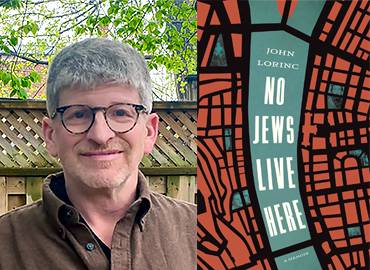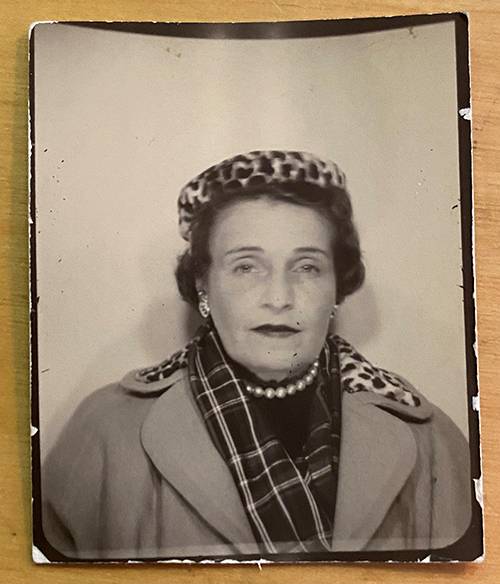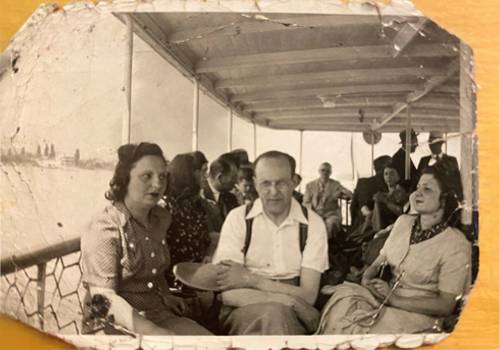Alum John Lorinc’s ‘No Jews Live Here’ is a sweeping family saga grounded in Hungarian history
by Coby Zucker

For years, UC alum John Lorinc wanted to tell the stories he grew up hearing about his family’s history in Hungary, surviving in wartime Budapest and their eventual move to Canada.
That desire became reality with the release of his new book, No Jews Live Here published by Coach House Books in November 2024.
No Jews Live Here is a generational saga of survival and resilience, a deeply personal account of a family history, even as it paints a wider picture of intricate geopolitics and historical circumstances, and how they influence one family in countless ways.

“I started trying to make the book into something more than just a collection of anecdotes about my family and really superimpose it on this very complicated historical moment,” says Lorinc, who earned his bachelor of science in 1987 as a member of University College.
The story centres on Lorinc’s grandmother, Ilona Barta, a no-nonsense, eccentric matriarch who buoyed a family during a time when Jews were being persecuted throughout Europe. For 30 years, Lorinc had been toying with the idea of telling Ilona’s story, as heard through disparate tales woven by his mother, Ilona’s daughter.
“I think you need a certain kind of emotional maturity to deal with this material,” Lorinc says. “I just wasn't ready until recently.”

No Jews Live Here began as a pandemic project in 2022. Lorinc was inspired by a Hungarian book he was asked to review about the same forced labour camp where his father had been held at the end of the war.
In No Jews Live Here, Lorinc contextualizes his family story in the broader framework of Hungarian history — through the Holocaust, the 1956 Revolution and a final exodus to Canada. In doing so, he offers a broader understanding about the nature of people, power and xenophobia.
“Human beings find scapegoats,” Lorinc says. “They find people who are different in their midst. And, in certain circumstances, a certain hysteria accrues around those people, and they become incredibly vulnerable.”
“Bureaucratic tools are brought to bear in forcing people out. It's important to remember that the yellow star was a bureaucratic tool.”
In writing the book, Lorinc drew extensively on his journalism background as a feature writer, and even the math degree he earned at U of T, which he says taught him the value of logic and structure.
“I don’t want to just sprinkle my research on the page and hope my readers understand what I'm getting at,” he says. “The logic is important. And that was something I learned during my math degree.”
Lorinc got his start in journalism at The Varsity, U of T’s student newspaper. There, he met his wife, Victoria Foote (BA, 1988), and other students who challenged him to evaluate himself through a more critical lens. He even revealed for the first time that he was Jewish — in Lorinc’s early life, his father had instructed him to keep this a secret.
Those experiences set Lorinc on a path toward becoming the freelance journalist he is today, writing features and books on technology and cities. No Jews Live Here was a departure from his comfort zone, but one that paid off.

“It’s been very gratifying,” Lorinc says of the response to the book. “This is a book I really wanted to write. I've heard back from people who read it and who felt moved by some of those stories and the depictions of the people who I'm related to.”
Lorinc knows he is not unique in learning his family history via a tradition of oral storytelling.
“Part of what this book is about is the way families transmit stories, and how we should interpret those stories and what we should make of them.”
Lorinc says he is grateful to have his 92-year-old mother as a willing storyteller for many of the anecdotes that made their way into the book. He encourages others in his position to make the most of their own situation by building a record of these stories for future generations.
“Don’t wait,” he says. “I know people who regretted not putting a tape recorder down in front of an older relative. People die and their stories go with them.”